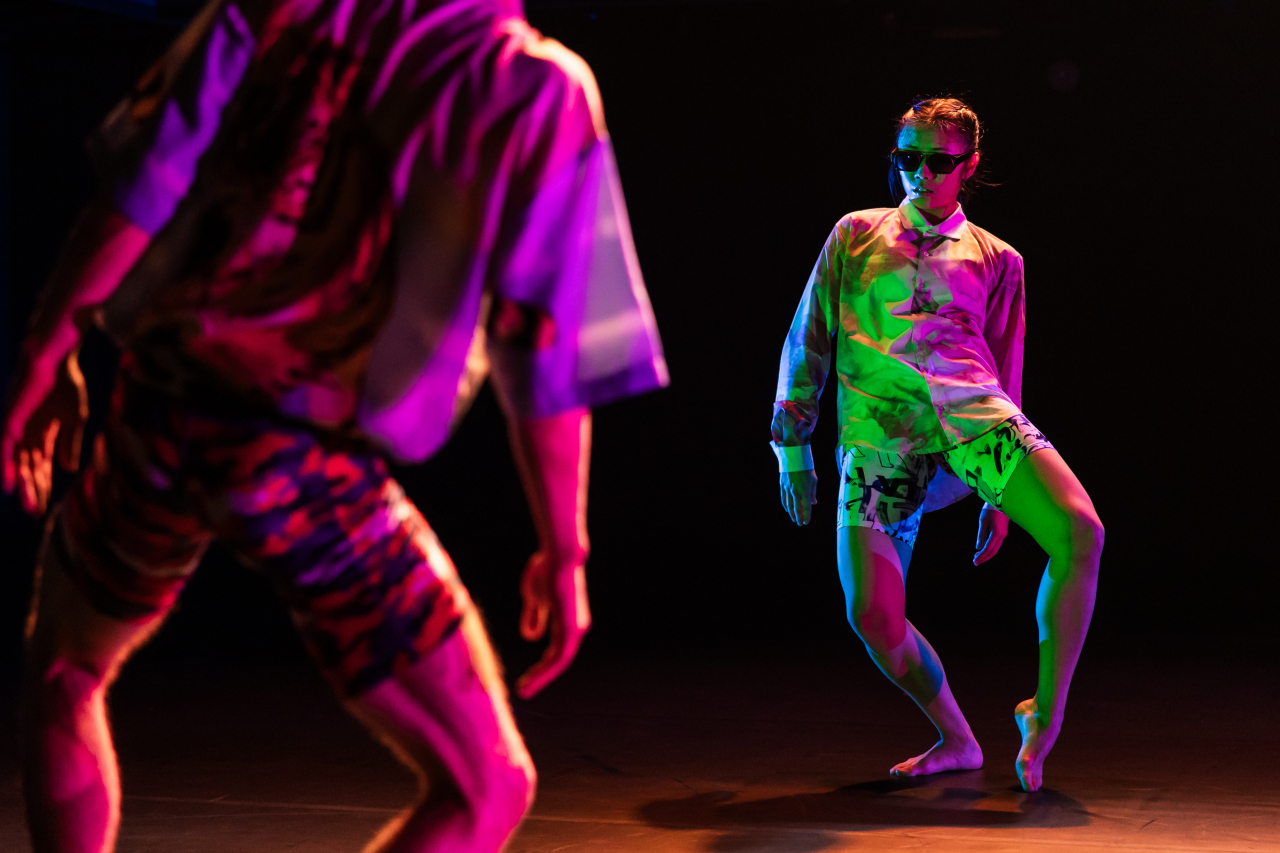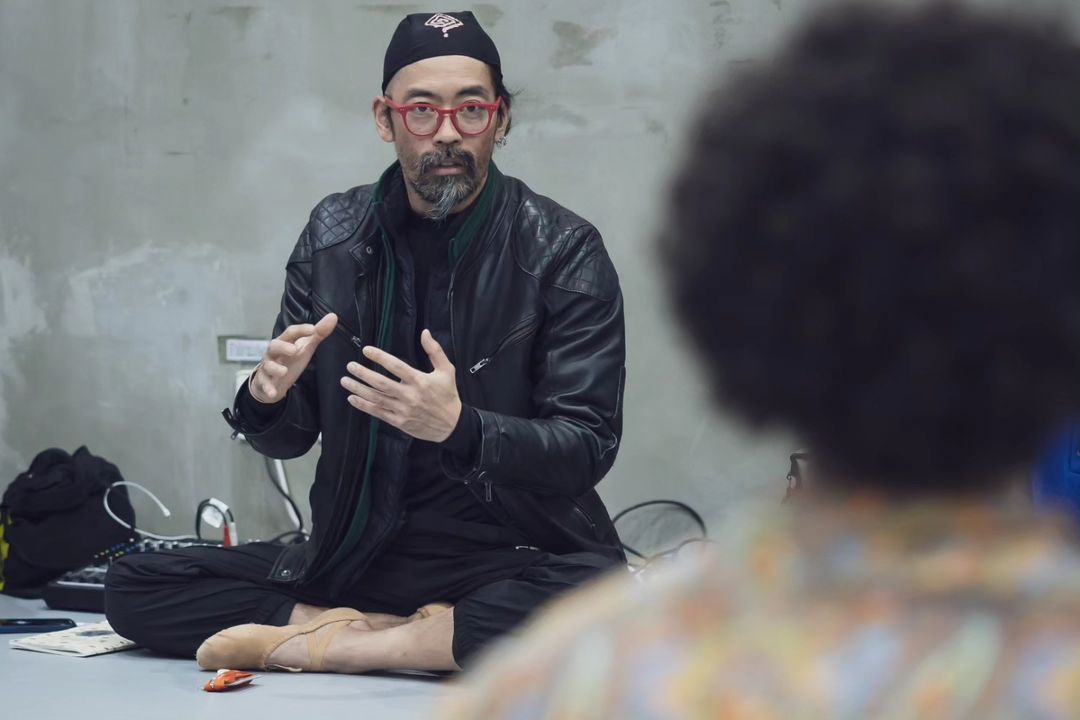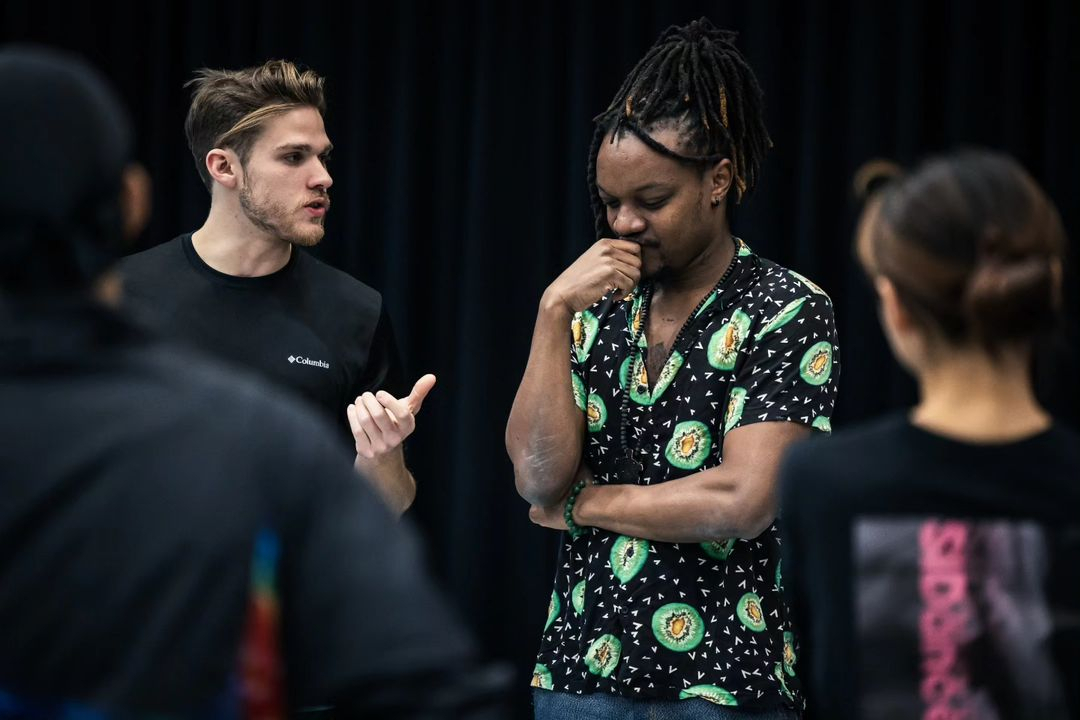[Herald Review] Korean and Welsh dance companies share creativity in 'Wales Connection'
Korean, Welsh choreographers work with dancers from counterpart dance companies
By Hwang Dong-heePublished : Nov. 27, 2023 - 15:46

The striking costumes of the three dancers immediately captured the audience's attention. From hats to sunglasses, and even socks, everything appeared to be mismatched, yet the patterns were vibrant and eye-catching.
In “Catachory,” the dancers existed in their own bubbles, at times making rhythmic leaps while sitting or lying down, wriggling like caterpillars, at other times appearing like broken mannequins.
The scene is from "Wales Connection," a collaborative project between the Korea National Contemporary Dance Company and the National Dance Company Wales, which is set to premier two performances at the Seoul Arts Center from Friday to Saturday.
Choreographer and artistic director Kim Bo-ram from the Ambiguous Dance Company, and Welsh-Zimbabwean choreographer Anthony Matsena, each worked with dancers from their counterpart dance companies.
Kim introduced his latest piece, "Catachory," exploring the concepts of "sound before music" and "body before dance.” He visited Wales in September and October, conducting workshops there with the dancers. The outfits were personally selected by Kim and the three dancers during their tours of markets in Wales and Korea.

"The word 'catachory' is a term I coined. It means an 'invisible light,' implying the origin of all life. I wanted to tell a story that doesn't exist in the world,” said Kim in an interview with The Korea Herald.
"Life originated from light, but we don’t seem to recognize the light. … Explaining it in Korean was difficult. Ironically, working with foreign dancers made it easier to find the essence (of its meaning). Almost all movements in this piece were created on the first day (of the workshop)."
The music was composed and directed by Jang Young-gyu of Leenalchi, a "gugak"-based alternative pop band. Gugak is a type of Korean traditional music. The Ambiguous Dance Company and Leenalchi have previously collaborated on the YouTube hit video, “Tiger is Coming.”

The atmosphere for the second piece, "Canned Meat" choreographed by Matsena, was set well before the actual performance. Thick fog enveloped the stage during intermission, creating a zombie-like factory setting amid the bluish light. Dancers contorted their bodies in unthinkable directions, screaming from the side, creating a palpable tension.
Matsena said that the piece “explores the concept of a world on the brink of collapse, where eight individuals strive to escape the suffocating grip of global capitalism, consumerism and overworking.”
“The piece is inspired by a book called ‘Galapagos’ by Kurt Vonnegut,” said Matsena. “It talks about a global dystopian event where the world ended and got to restart, discussing how unhealthy (humans have been) living.”
The title, “Canned Meat,” is also ambiguous, addressing the value we place on ourselves as people and the hyper-aggressive capitalistic social structure, according to Matsena.
“(In the piece,) we see people in the factory overworked, with unhealthy work practices and abuses of power. We feel pressure throughout the whole piece.”

Matsena met Korean dancers through auditions in April and worked with them in Korea from early October. He sought dancers with curiosity and individuality, selecting eight dancers from diverse backgrounds, including those with a background in Korean traditional dance, contemporary dance and street dance.
“It was really nice that they all have their unique thing about them. … We had a board at the back (of the practice room) and we would write down all the different ideas and emotions we would feel in that world.”
“I would like (the audience) to leave with the sense of feeling that they have been in a pressured environment. The piece is just constantly squashing, squashing and squashing. And right at the end, they finally get to breathe.”



















![[Today’s K-pop] Treasure to publish magazine for debut anniversary](http://res.heraldm.com/phpwas/restmb_idxmake.php?idx=642&simg=/content/image/2024/07/26/20240726050551_0.jpg&u=)